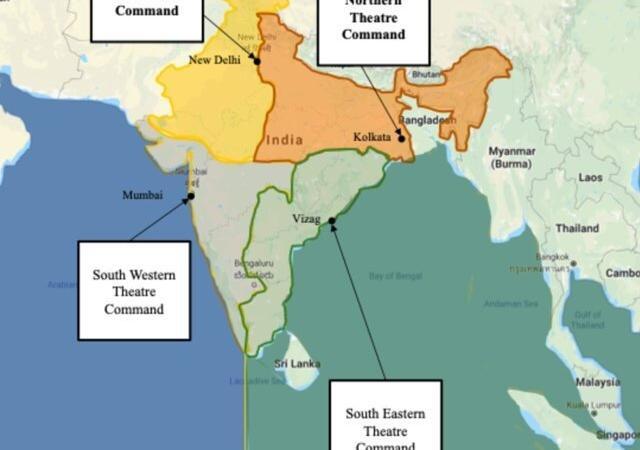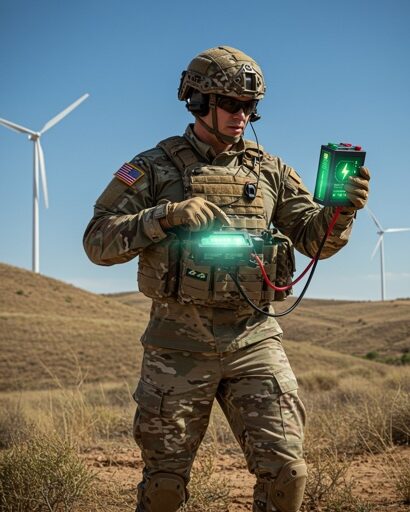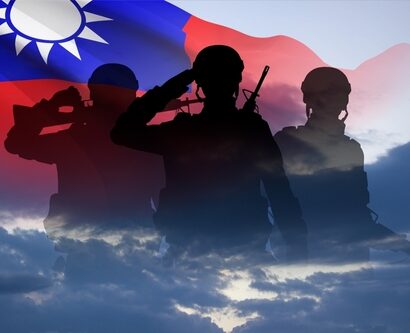Abstract: Based on terrain and strategic challenges, the following essay proposes a framework for India’s Theatre Command system. Larger theatre structures allow for more flexible military power collaboration, whereas inter-service integration enables centralised joint planning and distributed military power application. The four suggested Theatre Commands are shaped by the aforementioned characteristics. The Northern and Western Theatre Commands will be in charge of the Indian ocean’s land boundaries with China, Myanmar, and Bangladesh respectively. Furthermore, all theatres are to be held accountable for the hinterland. The current Chiefs of Staff Committee, to be named the Joint Commanders and Staff Committee (JCSC), with the Chairman, three Chiefs, and four Theatre Commanders serving on it, is to create a military plan. The Joint Chiefs of Staff will provide operational directives to Theatre Commands. On the other hand, the Joint Operational Staff (JOS) at HQ IDS will task Theatre Commands and provide resources as needed. The Chief of Defence Staff (CDS) hat is typically worn in interactions with political leaders or civil officials while in contrast the CJCSC hat is typically applied within military forces.
Bottom-line-up-front: The CDS is clearly eager to get the Theatre Commands passed. As a result of this, theatre command is arguably the most efficient way to conduct war. A significant amount of thought and care must have gone into the concept, however, it feels rushed and lacks clarity in terms of structure, operational control, and other aspects of forces are yet to be trained.
Problem Statement: The CDS and the Department of Military Affairs (DMA) have been strained in fulfilling deadlines with the Chief of Air Staff declaring the Indian Air Force a ‘supporting arm.’ How much will this decision affect the setting up of the Theatre Commands?
So What?: A plan with four to five integrated tri-service theatre commands led by three-star officers is well under discussion. The theatre commander will report to the Chiefs of Staff Committee (COSC), which includes the three service chiefs and is chaired by the CDS. This marks a dramatic shift in operational control from the service chiefs to the COSC. Each command will have assets from all three forces. The theatre commander will have operational control over all assets, regardless of opposing forces.

Source: Research gate.com
Geopolitics and Security Threats
In the restructuring conceptual framework, geographic variables and risks must be prioritised. The Indian military’s primary goal is to balance military strength between its continental and maritime space within a context of cooperative flexibility.
China and Pakistan pose the most serious threats to India, with China carrying the more significant chunk of risk. Notably so, a Sino-Pakistan alliance might also constitute a joint threat. China is particularly a threat to India’s northern borders at a continental level, as well as the Indian & South China Seas on the maritime front. Additionally, there is a likelihood of cyber and space threats. The countries with physical spaces – air, sea, and land – these threats are of strategic significance.[1]
The Chinese Threat
The northern border threat is essentially a “salami-slicing” one. Indeed, the military can conceptualise tremendous threats, such as large Chinese military deployments across the Himalayas. Nonetheless, It is difficult to sustain a large force across the Himalayas for long durations, especially during winter, which would provide India with abundant attrition opportunities to prevent China from entering the country with “great struggle.” China’s key military concerns include Taiwan, East Asian countries, as well as the South China sea. In the event of a “major confrontation,” India has the military might to limit its military application potential against its main opponents. The Indo-Pacific region is now known as the maritime space, the Indian Ocean being the most important naval battleground in the area. Collaboration with other groups such as Quadrilateral Security Dialogue (Quad) and the Association of Southeast Asian Nations (ASEAN) is ideal for the South China Sea and other global maritime zones.[2] To secure marine communication cables, a submarine communications cable is a cable installed on the seabed between land-based stations to transmit data across oceans, lakes, and lagoons. The Indian Ocean maritime domain represents a structured offensive military posture that can make use of peninsular India’s geographical advantage by thrusting lines of communications (SLOCs) into the Indian Ocean like a sword sea given that rail and road transportation cannot support the burden and volume that modern ships are capable of withstanding. China’s reliance on such SLOCs will remain, despite its search for overland alternatives. Additional soft targets in the Indian Ocean such as fishing and survey vessels can be exploited for non-military purposes.
The Indo-Pacific region is now known as the maritime space, the Indian Ocean being the most important naval battleground in the area.
The Pakistan Threat
The main threat from Pakistan is terrorism. In the event of a terrorist attack, India’s military must be capable of striking without hesitation. This encompasses air power, missiles, and long-range artillery, as well as special forces. Simultaneously, shallow land thrust capability would be required. Jammu & Kashmir’s Armed Forces deployment for internal security is also likely to continue.
The Indian Navy should be able to conduct a strategic offensive. Pakistan may pose limited conventional land threats, particularly if a Sino-Pakistani alliance exists. Threats posed by a Sino-Pakistani nexus could best be evaded by adopting a strategic defensive stance in the north and west, as well as a strategic aggressive posture in the maritime domain.
Land and sea operations are interrelated and should be coordinated to achieve national strategic goals. Thus, their Land strategies must be viewed as one military weapon[3]. Even more importantly, such thought can only be fostered, groomed, and fructified by collaborative organisational structures.
As a matter of fact, Chinese troops are already in Pakistani-held areas of Jammu and Kashmir, and all three Pakistani armies have access to Chinese technology and training. General Musharraf selected Beijing 22 years ago during the Kargil battles. Several studies have suggested that China’s investment terms in the China-Pakistan economic corridor projects could turn Pakistan into a Chinese subsidiary. Some even go as far as saying “colony”. I have argued for a decade that the two countries (plus the Kashmir militancy) pose a trifecta of national security challenges to India.
Several studies have suggested that China’s investment terms in the China-Pakistan economic corridor projects could turn Pakistan into a Chinese subsidiary.
The army might combine forces in facing Pakistan and those opposing China, but the air force would need additional flexibility in the event of a coordinated attack. After all, today’s quickest jets can fly across India in an hour.
Political Purpose
Diagnosed with a rare political intervention, theatre commands are no longer a point of contention. They are intended to aid in coordinated planning and execution. Since the emphasis is on establishing organisational structures, the question becomes what and how?
The Allocation of Business Rules directs the Chief of Defence Staff to “support the restructure of military instructions for maximum resource utilisation through jointness in activities, including the development of joint/theatre commands.” The CDS serves three functions, first, he is the main military counsel to the Raksha Mantri (RM) and also the director of the newly constituted Department of Military Affairs (DMA). More precisely, both are MoD activities with no operational role. Lastly, he is the Chairman of the Joint Commanders and Staff Committee (CJCSC) of HQ IDS, which aims at improving integration of policy, strategy, planning, and executive operations.
The CDS serves three functions, first, he is the main military counsel to the Raksha Mantri and also the director of the newly constituted Department of Military Affairs.
Department of Military Affairs (DMA)
Under the MoD, the DMA deals with military-specific matters, whereas the DOD, which reports to the Defence Secretary – covers more significant defence topics such as capital procurement. The other departments of the MoD should collaborate to develop the DMA as a military tool. There will be a lot of overlap which necessitates close collaboration.
Interestingly, as the head of DMA, CDS is in charge of the RM’s Operational Directive, a policy document established by the nodal agency, DMA. This will require extensive discussions with HQ IDS, other MoD departments, and other components of the national security system. Currently, the RM’s political orientation is hampered by the lack of a national security strategy. Of which, national strategy entails using force for political purposes, whereas military strategy deals with deterrence and the application of force.
Military policymakers at the MoD must be kept separate from military strategists given that officers tend to view global affairs solely from a security perspective. Insufficient awareness of diplomatic and political means leads military officers to use force to perform statecraft. The policy will outline the strategic objectives.[4] The CJCSC’s HQ IDS will have to determine how to apply DMA’s policy/strategy. Both processes require the balancing of means and ends, which subsequently necessitates reasonable budget allocation assumptions. As a result, the CDS must work hand in hand with the Defence Secretary and the RM to secure an appropriate budget for both capital and income.
Military strategy, on the other hand, must adapt to changing conditions. This will demand continual dialogue between MoD policy with HQ IDS military strategy, with three-hatted CDS serving to bridge the two. Because the government has required that DMA staffing be done within the available employee pool, all of the core staff at HQ IDS are also DMA staff. This is a temporary solution that confuses both policy and strategy. Alternatively, there should have been two policy and strategy verticals in the DMA. The government agreed to keep the HQ IDS below and unintegrated.
Integrated Theatre Commands (ITC)
ITC is a specialised integrated force capable of autonomous operation. The theatre should be spacious enough to accommodate large amounts of people. The CJCSC will assign Integrated Theatre Commanders to plan and execute all warfighting inside the theatre.
Given India’s location, the two most important ITC configurations should be continental and maritime. The Army and Air Force are dominant in the Continental Theatre. The Navy dominates the Maritime Theatre, but elements of the other two Services are present. Despite being the largest imaginable theatre directly under HQ, IDS, a single Continental Theatre would be too large for a single theatre commander to handle. As a result, the continental theatre is divided into two commands: one for the north (Northern Theatre Command- NTC) and one for the west (Western Theatre Command- WTC) against Pakistan.
Essentially, an integrated theatre command allows all three services to work together to secure a certain area. Faced with a national security threat, a military commander in charge of a combined command will have access to the Army, Navy, and Air Force units. The commander can also conduct collaborative training using logistics from all three services’ logistics. Currently, India has only two tri-commands. The Andaman and Nicobar Command (ANC) was established in 2001 and is led by rotating service chiefs. The second is the Strategic Forces Command, formed in 2006. The present military system contains 17 commands, 7 each for the Army and Air Force, and 3 for the Navy. The Army has Northern, Southern, Eastern, Western, Central, Southwestern, and maintenance together with training commands. Seeing as the Navy is divided into three commands. Integrated theatre commands, integrated theatre commands would allow all three services to conduct operations together, according to defence analysts. In recollection of certain accounts, four commands are planned: air defence, marine theatre, integrated eastern and western theatres. The number and character of India’s integrated theatre commands are yet to be decided upon.
Faced with a national security threat, a military commander in charge of a combined command will have access to the Army, Navy, and Air Force units.
Transition – Military Leadership’s Role
For the military to succeed, it must fit the political vision prescribed to the Theatre Commands. Service specialisation must give way to a holistic view. The transfer to Theatre Commands will be difficult, and the primary challenge will come from within the armed services. The IAF leadership must acknowledge and honour the political mandate. So, it is necessary to build and promote a narrative of national and military-strategic advantages. A CDS-led exercise in internal armed forces communication will be part of the training curriculum. This cannot wait for the Theatre Commands to be created.
The IAF leadership must acknowledge and honour the political mandate. So, it is necessary to build and promote a narrative of national and military-strategic advantages.
The DMA/HQ IDS has knowledge in doctrine and organisation, but the transfer to Theatre Commands is challenging, and competence in that area is not available in the government, rather it is accessible in the private sector. There is a similarity. Businesses have started experimenting with Strategic Business Units, which are much like Theatre Commands. The civil management experience must be leveraged to build a transition philosophy that will eventually provide a transitory plan. Provided that all members are Indian citizens, secrecy should not be an issue.
Conclusion
In order to create ITCs, one must first curate a skeleton command and control framework that allows for decentralised planning and execution. This should come from a shared ideology based on a common vision of the battles-troops should be prepared to fight. Together, we should prioritise electronic warfare, cyber intellect precision weapons, and technology. It will also maximise resource utilisation and save funds that can be used for force modernisation. The funding crunch must speed up the move to Theatre Commands.
The JCSC should be responsible for the skeleton structure. As a three-hatted CDS, it is important that it is not viewed as a “bossy brother”. Although it used to seem unthinkable that the Chiefs would ever consent to a proposal that diluted their existing function, it is now a foregone conclusion. There is no other technique to alter ITCs effectively. Interestingly, many Chiefs have got in the way of such linkages so now they have no choice. The propensity of humans to cooperate in large numbers is a lesson for military leaders as they navigate the tumultuous seas of a politically imposed Theatre Command System.
Interestingly, many Chiefs have got in the way of such linkages so now they have no choice.
Neeraj Singh Manhas is a Doctoral scholar in International Relations at Sardar Patel University, Gujarat, India. He has completed his Masters in Philosophy in Political Science and is currently a research intern at the Kalinga Institute of Indo-Pacific Studies (KIIPS). Prior to this, he was a research Intern at the National Maritime Foundation (NMF), New Delhi. He has authored two books under his name, with research interests that cover India-China in the Indian Ocean, India’s maritime securities and Indo-pacific studies. The views contained in this article are the authors alone.
[1] Alex Philip Snehesh, “What are military theatre commands and why does India want to switch to then,” The Print, July 06, 2021, last modified August 04, 2021, https://theprint.in/defence/what-are-military-theatre-commands-and-why-does-india-want-to-switch-to-them/690487/.
[2] Raza Maroof, “The theatre Command debate,” Tribune India, July 10, 2021, last modified July, 20, 2021, https://www.tribuneindia.com/news/comment/the-theatre-command-debate-280695.
[3] Gupta Shishir, “India to get 5 military theatre commands, one each for China and Pak,” Hindustan Times, October 20, 2021, last modified February 06, 2021, https://www.hindustantimes.com/india-news/india-to-get-5-military-theatre-commands-one-each-for-china-and-pak/story-UzFJNollsvpj3tcUetWVNM.html.
[4] Negi Manjeet, “CDS Gen Bipin Rawat, defence chiefs discuss creation of theatre commands,” India Today, July 23, 2021, last modified on July 28, 2021, https://www.indiatoday.in/india/story/gen-bipin-rawat-defence-chiefs-discuss-creation-of-theatre-commands-1831500-2021-07-23.






